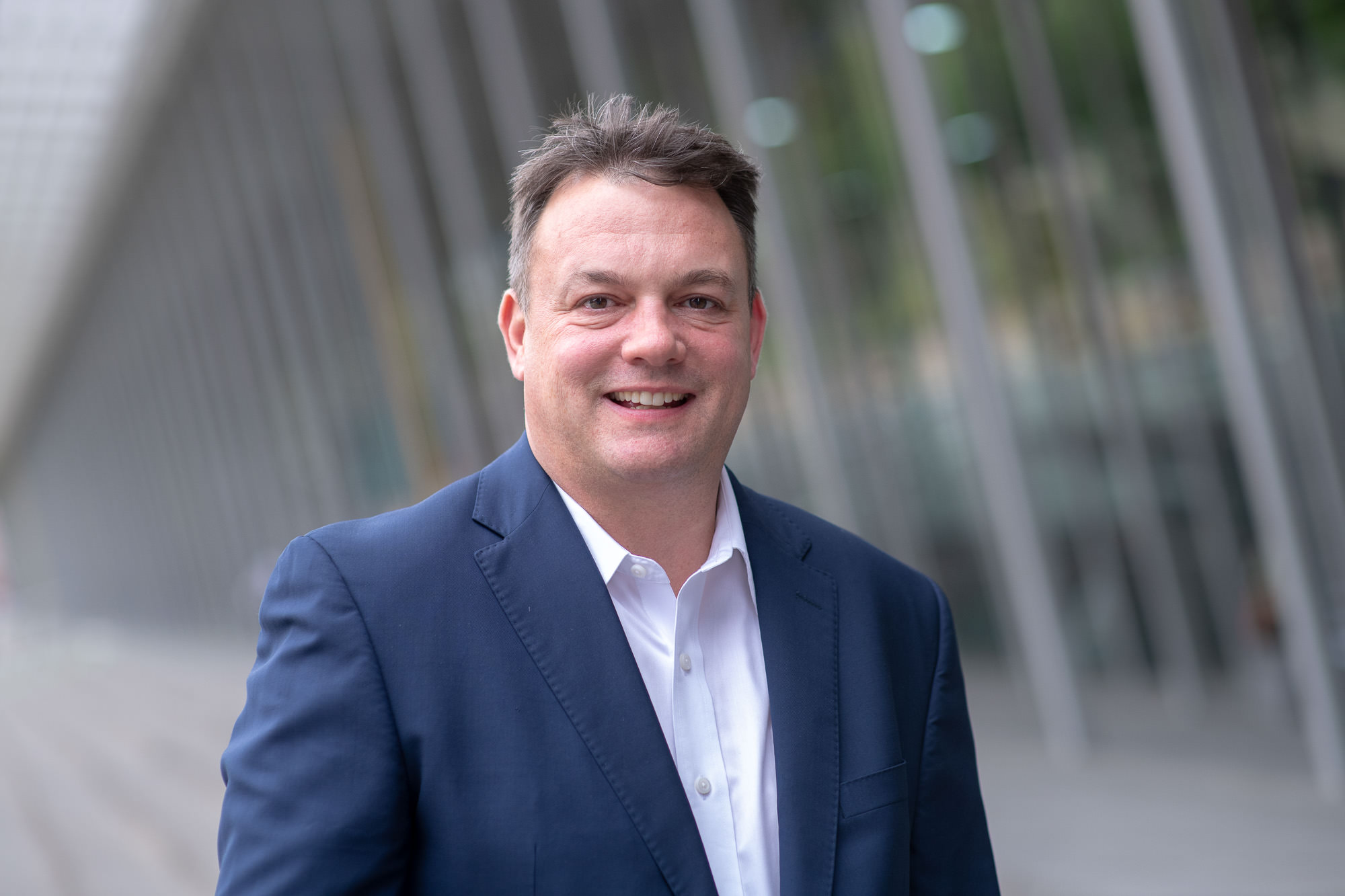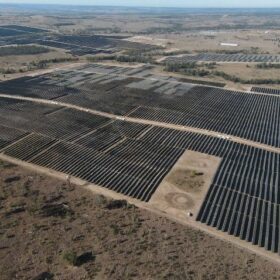pv magazine: It was recently announced that Nextracker has passed the 2 GW cumulative project milestone in Australia, how is 2018 shaping up for you?
Right now, we have more than a dozen in review, we have done almost 2 GW to date, and we’re hoping to do better than last year. Our pipeline is as robust as one year ago. We ended up closing 1.3 GW in 2017. So, [before last year] we had five projects in the ground already, with 100 MW deployed.
Looking forward, however, there must be some challenges with the current policy deadlock and what we’re hearing about grid constraints. What is your feeling for the way things will pan out for you?
It’s hard to say. With the policy and the ways things are going, it’s difficult to make predictions. The RET is pretty-much achieved, and there aren’t more subsidies driving the market. But I am seeing bigger and bigger jobs are coming in – they’re funded and the money is there.
The constraining factor is the grid capacity. We all know the Marginal Loss Factors (MLF) of the projects that are put on the same kV line is a really big factor. If there are too many projects on the line, then basically it bottlenecks the whole thing. That means they are not getting the energy that they have modelled, because they didn’t put in those things to suck the power down – and that is a developer issue.

Photo: pv magazine/Dave Tacon
So, we’re essentially seeing grid curtailment. Is that a result of a lack of end demand or grid capacity?
Either there is not enough capacity, I don’t know about demand – my feeling is that it is there – but the amount of juice being put on the grid is one of the issues. That is where the storage piece, like batteries, is going to offset that issue. What needs to be figured out is how to get the storage balanced with the solar.
And Nextracker is confident that flow batteries are going to be a good solution?
I do think that flow batteries are a good solution for smaller projects and for offgrid projects – like the diesel displacement projects. But we haven’t quite got there yet. The market is ready and all of the RFDs that I am seeing incorporate storage.
Beyond storage on a technical level, bifacial is the other big trend for projects going forward. Is this right?
Yes. With pricing coming down and some incredible technologies having come to market, we’re able to model and test at our headquarters in California with several leading panel manufacturers.
Smaller applications, for the C&I market, for tracking are more common in the U.S. Do you see that growing in Australia?
We’ve opened up the C&I side of the business in Australia headed by Andrew Chino, director of C&I sales, which brings in two revenue streams. We have the up to 20 MW revenue stream and then above that on the utility scale front. Things are mature and running really well. We are working closely with our EPC partners and collaborate with developers on energy yield enhancement technology – like our TrueCapture control system. We’re super excited to roll this out on our Australia fleet or wherever that make sense.
Our locally-based team is really efficient, and the teams in the field are working well. Alex Rogers is our Operations Director and we’re actually localizing our PowerworX Academy for installers and O&M training. With the land locked and loaded, we will be hosting our first installer course in December.
Well, let’s take a step backwards. How did you get to this point? How did Nextracker enter the Australian market?
We got our start way back in 2015 by winning the [56 MW] Moree project. It was the very first single-axis tracker put on the ground in Australia. FRV was the developer and Elecnor was the EPC that gave us the contract.![]()
Marco Garcia [Nextracker Chief Commercial Officer] had a relationship through years past to Spain with Elecnor, so when they won the job they had already spec’d in a worthy competitor and Marco had just started pushing the Nextracker design onto the market. We spoke to FRV, gave them the pitch and showed them the advantages of our design – which at the time was cutting edge because no-one had a distributed tracker. We demonstrated the distributed model and a balanced design and showed that there will be 30% less piers because we have a balanced design that will allow the savings on capex.
Not only that, we allowed Moree to use our self-powered tracker, at the time a wired solution. That meant that it had to be connected to the grid to drive the tracker. But with our self -powered design, we didn’t need that. So, the first self-powered tracker ever was installed at Moree.
At that early stage, did you have a team on the ground?
Moree started us off. It was managed from the team in the United States. We had construction support under contract, but no Nextracker employees. We ended up selling another job called DeGrussa – in WA – to juwi. That was a 10 MW with battery solution. We executed that also from the States.
And personally, why did you make the move?
With a lot of C&I project development and execution under my belt in the United States [for Nextracker], I saw the market picking up a little bit in Australia. My wife is Australian, and I thought, ‘my family is here, I had just got married, I had a little boy, a little girl on the way – and the market is picking up.’
We ended up picking up the [25 MW] Barcadline job with Elecnor again. After that job, and I saw what ARENA was doing to get the [utility scale] market going. So, my argument was that we have a presence in Australia, why don’t we set up an office, and support things locally.
That was in the end of 2015. I presented it to [Nextracker CEO] Dan Shugar and Marco, and they basically said, “we’ll promote you to VP, will backfill you position on the C&I team, let you go to Australia, and let’s see what you can do.” No-one had any idea what the market was going to, and was just starting to build up some steam. Previously, on the utility scale side, the market didn’t really even exist.
We came over here, and it just happened to be perfect timing. We got here in May 2016, right when the ARENA submissions were due. Our supply chain and project management teams hit the ground – all the while I was getting bombarded by so many different players trying to get their ARENA subsidy covered. It wasn’t what I expected. I was essentially working off the kitchen table with very little local support. I was drawing on support from the United States for hundreds of different quotes. I didn’t really know many people in the market yet. I had a two year old in the background every time I picked up the phone. Looking back today, it’s hard to believe where we were then compared to where we are now.
We picked up Toby Patterson [Nextracker Australia Manager, Utility Scale], and he supported me locally and started building relationships with UGL, RCR [Tomlinson], and some of the bigger local players – as we had relationships with Elecnor, obviously. There weren’t really too many other players on the EPC front locally who were willing to use their balance sheet to get into some of these utility scale jobs.
And you’re based in Manly, why is that?
I met Angus Gemmell from Solar Choice, and he told me that the office next to him was open, and that maybe I should check it out. It was actually exactly where I was living, so it seemed ideal. In California, I had been driving over two hours back and forth from San Francisco to Fremont every day. All of sudden I didn’t even need a car! With Flex’s [Nextracker parent] green light, we got it and moved into the Manly office – hence the start of ‘solar beach’.
So, what is ‘solar beach’? And why haven’t I received an invitation yet?
You will! There are multiple big solar companies in Manly: Solar Choice, Rina Engineering, Wirsol, British Renewables and a few others. It’s great to be able to cross pollinate and leverage each other when it makes sense. Edify is also there. And for us at Nextracker, there was a cultural fit.
Initially our office was just two people, but I hired some more, and we started working on those ARENA jobs. There were 12 projects that utilized trackers [in the ARENA program]. All of them were designed with Nextracker, and all but three or four went with us. Another worthy competitor also entered the market, and began to provide some competitive tension.
From that point, the ARENA jobs started moving. Emu Downs [20 MW] and Kidston [50 MW Phase I] were the first ones off the block for us with UGL.
From me and one other guy, we are now 25 people locally, we use local engineering support through a group called SMEC [Snowing Mountain Engineering Corporation]. Local engineering support is key, and we lined SMEC up pretty much in the first week I was here, because the ground conditions are really different from site to site. Local design allowed us to be aggressive and beat out our competition based on our engineering prowess.
Ok then, what’s next?
I’m going to get Southeast Asia up and running as well. That means three revenue streams in the same office, with the same operations support.
What is the timeline for expansion into Southeast Asia?
Now. But realistically by the end of the financial year in April, I hope to have some projects sold and deployed. Right now we are ahead of our numbers and I think it’s going to continue to grow.
This content is protected by copyright and may not be reused. If you want to cooperate with us and would like to reuse some of our content, please contact: editors@pv-magazine.com.







1 comment
By submitting this form you agree to pv magazine using your data for the purposes of publishing your comment.
Your personal data will only be disclosed or otherwise transmitted to third parties for the purposes of spam filtering or if this is necessary for technical maintenance of the website. Any other transfer to third parties will not take place unless this is justified on the basis of applicable data protection regulations or if pv magazine is legally obliged to do so.
You may revoke this consent at any time with effect for the future, in which case your personal data will be deleted immediately. Otherwise, your data will be deleted if pv magazine has processed your request or the purpose of data storage is fulfilled.
Further information on data privacy can be found in our Data Protection Policy.